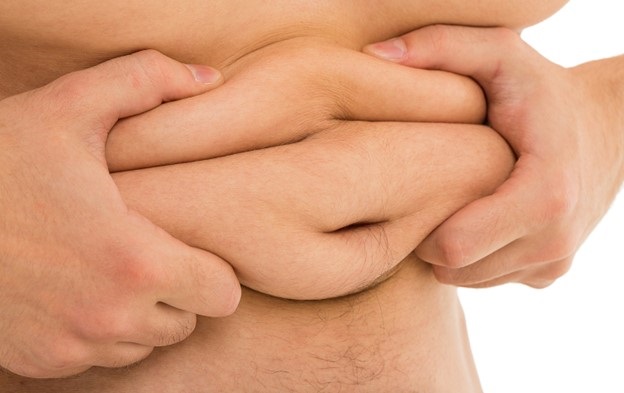How to Lose Abdomen Fat
Abdomen fat can prove fatal, as it increases the risk of heart disease and other chronic conditions. That said, most of the time, your simple belly fat-burning attempts, like dietary restrictions and rigorous exercise, might not prove helpful in shedding off those extra pounds. If you are stuck and frustrated with ineffective weight loss methods, we have you covered! In this comprehensive guide, we will dive into multiple effective ways to answer questions, like how to lose abdomen fat. So, without any further ado, let’s begin exploring! Tip 1: Intake Plenty of Fiber Soluble fiber effectively absorbs water to form a gel-like texture, stopping food from quickly passing the digestive tract. This food retention makes you feel full for a longer span, limiting your food intake. This helps reduce belly fat. This effect has been proved by an observational study involving 1100+ adults. According to its results, for every ten-gram increase in the intake of soluble fiber, belly fat gain decreased by 3.7% over the span of 5 years. Some excellent sources of soluble fiber include oats, barley, legumes, vegetables, and fruits. Tip 2: Reduce Stress Levels With increased levels, adrenal glands increase the secretion of cortisol, which triggers belly fat gain. This stress hormone spikes appetite and drives abdominal fat storage. Cherry on the cake is that women with a large waist tend to produce more cortisol as a stress response, increasing the fat gain around the middle. To limit it, practice stress-reducing activities, like yoga and meditation. Tip 3: Indulge in Resistance Training Better known as strength training or weightlifting, resistance training ensures the preservation and gain of muscle mass. Though this perk is the core benefit of such training, they have more to offer. According to multiple studies involving people struggling with prediabetes, fatty liver disease, and type 2 diabetes, resistance training can prove fruitful in belly fat loss. Moreover, a study involving overweight teenagers shows that aerobic exercise and strength training can greatly reduce visceral fat. However, if you plan to begin lifting weights, consult with your doctor first or take advice from a certified personal trainer. Tip 4: Increase Your Protein Intake Protein intake can also help in effective weight management. Wondering how? Increased intake of protein promotes the release of peptide YY, the fullness hormone. It contributes to decreasing appetite and promotes the feeling of fullness. Proteins also support increased metabolic rate and assist in retaining muscle mass during the weight loss journey. Some excellent protein sources include beans, whey protein, dairy, eggs, fish, and meat. Tip 5: Limit Your Alcohol Intake Though alcohol offers health benefits, its harmful effects outweigh them. According to research, too much alcohol consumption can cause an increased gain of belly fat. By limiting your alcohol intake, you can significantly reduce your waist size. We don’t ask you to avoid it completely but limit the amount you drink in a single day. As per the recent Dietary Guidelines for Americans, men are suggested to drink only two or fewer alcoholic drinks per day, and women should drink one or less than one. Tip 6: Keep Track of What You Eat and Drink If there’s one key to managing weight effectively, it’s consuming fewer calories than your body needs. This can be ensured by keeping a food diary or relying on an online food tracker. Food tracking also assists in revealing your intake ingredients-wise, like how much protein or micronutrients you have taken. Some apps do allow recording your physical activity and exercise. Just browse online or hop inside your app store to begin your tracking journey today! Bonus Tip: Skip All the Above and Try Renew! Wait, have you tried all the above methods multiple times but are still unable to get rid of your stubborn abdomen fat? Wondering how do I reduce body fat? Worry not, as Renew has got you covered! Backed by scientific research and developed in an FDA-approved setting, this amazing supplement ensures you lose your body fat without compromising on your fav food intake or indulging in any rigorous exercise. Does it seem unreal to you? You need to watch this video.Renew is a weight loss supplement that can put backlash on the entire weight loss industry. It’s a blend of naturally sourced ingredients, which, when combined in a perfect ratio, can offer seamless benefits. With consistent intake of Renew, you will feel more alive and energetic throughout the day, and your belly fat will burn effectively. What sets this supplement apart from others is the fact that Renew resolves the root cause of belly fat, i.e., burn it so that it’s lost forever! What else? You can also enjoy exclusive discounts on this revolutionary weight loss supplement. 6 bottles – 180-day supply will cost $49 per bottle, three bottles – 90-day supply will cost $59 per bottle, and a single bottle – 30-day supply will cost $79 per bottle. You also get a 100% money-back guarantee for 60 days after purchase. So, if you feel unsatisfied with the results, just return your order, be it an empty one; you won’t be asked a single question, and a hassle-free return will be ensured. What else do you need? Wrapping It Up! The question of how to burn body fat can have multiple answers, but not all of them are effective. However, if none of the standard methods, like increased soluble fiber and protein intake, proves fruitful, we recommend trying out Renew! A natural blend of effective ingredients that burns fat in no time without compliance with any dietary restrictions or rigorous exercise. Hope you found this info helpful. Stay tuned for more.
How to Lose Abdomen Fat Read More »










